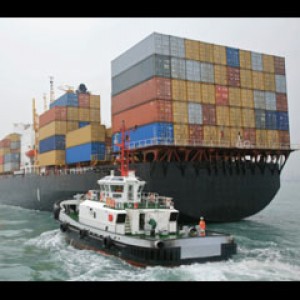Today we have a guest post from Peter Sun, an importing guru with vast knowledge of importing from China to Australia and New Zealand. If you are considering importing, make sure you check out his list of common mistakes that importers make (that cost them big time!).
Unless you've been living under a rock for the last 20 years you probably have realised that importing from China is a big business around the world. Chinese products are everywhere, if you look around the room you're in now and take a quick peek (look closely) you'll soon discover that a huge percentage of the products have been made in China or have been assembled in China..
From the desk your computer is on, to the light fittings above your desk, much of the stuff we see everyday and everywhere was made in a factory somewhere in China.
Then an importer decided to pack it in a 40ft container and ship it over here and if they know what they are doing ... Make a lot of money doing so.
Why you ask?
Because it makes for good business when you bring it home and resell it! There are a number of reasons for this:
- The wages in China are cheaper
- Materials are more accessible
- The Chinese are experts at designing products
- The Chinese are masters at mass production and lastly to everyone's surprise the production lines in China are more refined and organized that their Western counterparts!
The Chinese just know what to do when it comes to making things!
The rumors of poor quality items in China are untrue!
This is one big reason that Apple (the richest company in the world and makers of iPhones and iPads) turned to manufacturing in China. Apple were originally making iPhones at a cost of $40USD in assembly plants in the USA however they were having a few problems... efficiency problems mainly, they were losing money through time waste, machine problems and other minor issues that were costing them.
They had to do something different and fast to meet the crazy demand from their customers and to remain a profitable company.
That's when they went to China because they already had the infrastructure to produce what Apple wanted. Best of all, Apple could manufacture iPhones there at a manufacturing cost* of only $8 per unit!
Opens your eyes, right?
Importing from China isn't as complex as most people think. Many people think they need to speak Cantonese and travel to China, meet the high MOQ's that the factories demand. The reality is quite different...
In fact it's easy to import from China just as long as you follow a few steps:
1. Find a hot product (important point.. Don't import a 'doozy')
2. Select a manufacturer (finding a good factory that can produce your product up to your quality specifications is important too) - also check for factory overruns.
3. Get quotes and samples.
4. Negotiate the first MOQ and price (yes this is where you negotiate price and not a moment sooner)
5. Import the first batch of products
6. Sell your goods for a profit
7. Re order and get a better price and lower MOQ
Never stop negotiating! If you think you got it a good price originally you will be surprised how low you can get it on your 10th order. Sometimes even 50% lower that the original price!
Yes, building a relationship is important too, so if you can, once you have built up your business, be sure to head over to china at least once to meet the factory owner and take him out for karaoke and vodka! (every shot of vodka saves you 1% of the cost price) - ask me how I know? :)
The biggest mistakes importers make
Okay, it goes without saying that there are some 'common mistakes' that some beginner importers make when importing for their first time. Here are just some of the simple things you need to do to avoid some costly importing mistakes.
1. Call the factory on the phone (not many importers do this)
2. Using trading companies. Google search using Google Maps the factories location (if they are in the CBD in Hong Kong you can bet they are a trading company adding an extra 20% to your order)
3. Not ordering samples. Make sure you make your samples perfect even if it takes weeks of back and forward.
4. Ask for some of their clients in Australia or New Zealand (if you are from these places) and have a chat to their customers and get a review .
My goal of this short article is to open your eyes to the possibility of making money in China and to make you aware of how to avoid some of the common pitfalls.
Now I've got some exciting news..
So what I've done is arranged a special deal with SaleHoo to give their subscribers a special exclusive price on my video and manual for only $97.
Click here to gain access to Import Export Exposed at the special price and discover how to import goods the safe way and build a booming online retail business.
<p>Next: <a href="https://www.salehoo.com/blog/finding-suppliers-from-china">A detailed guide on how to find quality suppliers from China</a></p>










been looking at some products and talking to companies from China through AliBaba, interested to see what you offer.
You can check out products/brands we have using this demo if you wish: https://www.salehoo.com/find-a-supplier?cid=demo (you need to join for full details obviously but should give you some examples of what our suppliers have).
Once you join you can instantly access and contact all suppliers within our directory.
Join here when ready: https://www.salehoo.com/join-now?cid=demo
It's $67 USD for one year, unlimited use.